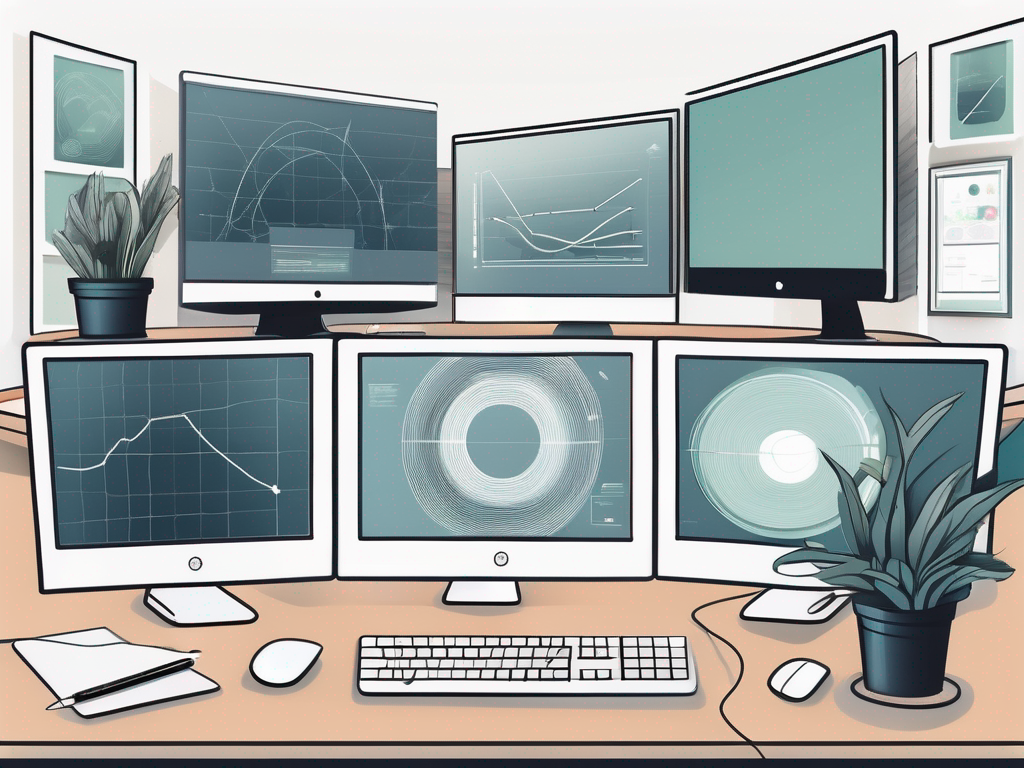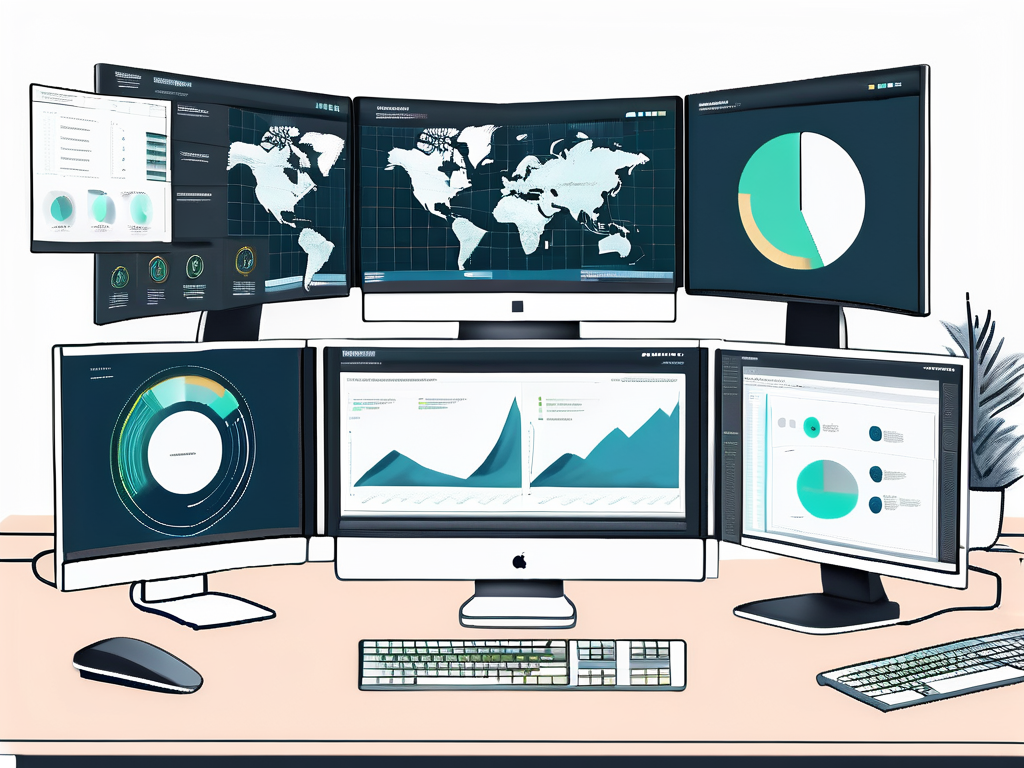
Boost Your Productivity: The Ultimate Guide to Using Multiple Monitors
We all know that in this day and age a single computer monitor might no longer be sufficient to meet your needs. Whether you're a professional working on multiple tasks simultaneously or a gamer looking for a more immersive experience, utilizing multiple monitors can greatly enhance your productivity. In this ultimate guide, we will explore the advantages of multi-monitor setups and provide you with a step-by-step guide to setting up and optimizing your multiple monitors for optimal performance.
The Advantages of Multi-Monitor Setups
Working with multiple monitors offers several benefits that can significantly impact your productivity. One of the primary advantages is the ability to multitask effectively. Instead of constantly switching between different windows and applications, you can have all of them open and readily accessible on separate screens. This streamlines your workflow and minimizes distractions, allowing you to stay focused and complete tasks more efficiently.

Another advantage of using multiple monitors is the increased screen real estate. With a bigger workspace, you have more room to spread out your windows, documents, and tools. This can be particularly useful for professionals such as graphic designers, software developers, and video editors who rely heavily on visual elements and need to work with larger files.
Imagine being a graphic designer working on a complex project. With multiple monitors, you can have your design software open on one screen, your reference images on another, and your email or communication tools on a third. This setup allows you to seamlessly switch between tasks without losing focus or wasting time searching for the right window. It's like having a virtual command center, where everything you need is just a glance away.
Moreover, for software developers, having multiple monitors can greatly enhance their coding experience. They can have their code editor on one screen, documentation or reference materials on another, and a browser for testing on a third. This setup enables them to write code more efficiently, as they can see their code and its output simultaneously, without constantly switching between windows.
Boosting Productivity with Multiple Screens
Multiple monitors can significantly boost productivity by providing you with a more organized and streamlined work environment. Here are some tips to help you make the most of your multi-monitor setup:
- Create dedicated workspaces: Assign specific tasks or applications to each monitor to avoid clutter and confusion. For example, you could dedicate one monitor to email and communication, another to your main work or project, and a third for research or reference materials.
- Customize your screen layout: Rearrange your monitors to match the physical layout of your workspace. This will ensure a more natural and comfortable viewing experience, reducing eyestrain and fatigue.
- Take advantage of window management tools: There are numerous software applications available that can help you manage and organize windows across multiple screens. These tools offer features like window snapping, virtual desktops, and hotkeys, allowing you to manipulate and control your windows more efficiently.
- Utilize taskbars on each monitor: Extend your taskbar to all monitors, enabling you to access applications and switch between them quickly. This eliminates the need to constantly navigate back to the primary monitor.
- Stay organized: Keep your desktop clean and clutter-free by utilizing virtual desktops or organizing files into folders. Having a well-organized workspace will save you time and reduce distractions.
Simplifying the Connection of Multiple Monitors
Before you can enjoy the benefits of multiple monitors, you need to ensure that all your devices are properly connected. Here's a step-by-step guide to help you simplify the process:
- Check your graphics card: Verify that your graphics card supports multiple monitors. Most modern graphics cards have multiple video outputs, allowing you to connect multiple monitors simultaneously.
- Gather the necessary cables: Depending on your hardware, you may need DisplayPort, HDMI, DVI, or VGA cables to connect your monitors to your computer.
- Identify available ports: Locate the available video ports on your graphics card. Common ports include DisplayPort, HDMI, DVI, and VGA. If you have multiple options, choose the ports that match your cables.
- Connect your monitors: Attach the appropriate cables from your monitors to the corresponding video ports on your graphics card. Ensure that the cables are securely connected.
- Power on and configure: Power on your computer and wait for it to boot up. Once booted, your operating system should recognize the newly connected monitors. Use your operating system's display settings to configure the arrangement and orientation of your monitors.
By following these steps, you can set up your multi-monitor system with ease, allowing you to take full advantage of the productivity benefits that multiple screens offer.
Step-by-Step Guide to Setting Up Multiple Monitors
Now that you have successfully connected your multiple monitors, it's essential to optimize their setup for a seamless and productive experience. Here's a step-by-step guide to help you get started:

Rearranging Your Display Configuration
The positioning of your monitors plays a crucial role in your overall user experience. Follow these steps to rearrange your display configuration:
- Access display settings: Open your operating system's display settings. In Windows, right-click on the desktop and select "Display settings." In macOS, go to the Apple menu, choose "System Preferences," and click on "Displays."
- Identify monitors: The display settings should show a visual representation of your monitors. Identify each monitor by its corresponding number or label. You can also rearrange the monitors visually by dragging and dropping their icons.
- Adjust positioning: Click and drag the monitor icons to arrange them in the desired physical layout. For example, if your monitors are side-by-side, drag the icons accordingly.
- Align monitors: Align the monitors' tops, bottoms, or sides to create a seamless and continuous visual experience. This ensures that the mouse cursor can move naturally across each monitor.
Once you have rearranged your monitors to your liking, it's time to fine-tune their display settings for optimal viewing.
Adjusting Screen Scale and Orientation for Optimal Viewing
To ensure a comfortable and visually appealing experience, you may need to adjust the scale and orientation of your monitors. Follow these steps to fine-tune your display:
- Access display settings: Open your operating system's display settings as mentioned earlier.
- Adjust scale: Locate the scale or resolution settings for each monitor. Increase or decrease the scale until the content appears clear and readable. Be aware that increasing the scale may reduce the amount of usable workspace.
- Rotate the screen (optional): If desired, you can rotate one or more of your monitors' orientation to portrait mode. This can be useful when working with long documents, coding, or reading e-books.
With your monitors properly positioned and their display settings optimized, it's time to explore the different display modes available to you.
Choosing Between Extending, Duplicating, or Disconnecting Screens
After arranging and adjusting your display, you have control over how your multiple monitors function. Here are the three main display modes available:
- Extended mode: This mode allows you to extend your desktop across multiple monitors, effectively increasing your workspace. Each monitor can display different windows and applications independently.
- Duplicate mode: In this mode, all your monitors will display the exact same content. It is useful for scenarios where you want to mirror your primary monitor's content, such as presentations or training sessions.
- Disconnect monitors: If you no longer need to use one or more of your connected monitors, you can disconnect them from your computer. This is particularly useful for laptops or situations where you need to work on the go.
Now that you have a clear understanding of the different display modes, it's time to designate a primary display for a seamless workflow.
Designating Your Primary Display for Seamless Workflow
When using multiple monitors, you may want to designate one as the primary display. The primary display serves as the main workspace and typically contains the taskbar and desktop icons. Here's how you can designate your primary display:
- Access display settings: Open your operating system's display settings.
- Set a primary display: Locate the option to set the primary display. Typically, you can do this by selecting the appropriate checkbox or dropdown menu next to the desired monitor.
- Confirm and apply changes: Save the changes and verify that the primary display is correctly set by observing the taskbar and desktop icons.
Now that you have completed the setup and optimization process, you can fully embrace the enhanced productivity and visual experience offered by multiple monitors. Remember to experiment with different configurations, tools, and workflows to find the setup that works best for you. Whether you're a professional seeking greater efficiency or a gamer looking to immerse yourself in epic virtual worlds, multiple monitors can undoubtedly take your productivity to new heights.
So, why limit yourself to a single monitor when you can harness the power of multiple displays? Embrace the possibilities, optimize your workflow, and unlock your full potential with a multi-monitor setup today!
But wait, there's more! Did you know that having multiple monitors can also improve your multitasking abilities? With multiple screens, you can have different applications and windows open simultaneously, allowing you to switch between tasks seamlessly. Imagine having your email client open on one screen while working on a project on another screen – no more constantly switching tabs or windows!
Additionally, having multiple monitors can enhance your creativity and productivity by providing a larger canvas for your work. Whether you're a graphic designer, video editor, or programmer, the extra screen real estate allows you to have more tools, timelines, or code windows visible at once, making your workflow smoother and more efficient.
So, don't hesitate to explore the world of multiple monitors and discover the endless possibilities it offers. With the right setup and optimization, you'll be amazed at how much more you can accomplish and how much easier it is to stay organized and focused. Happy multitasking!
If you would like to know more about the best practices for data recovery within your business, please click the link below.



